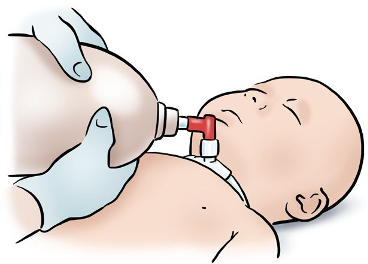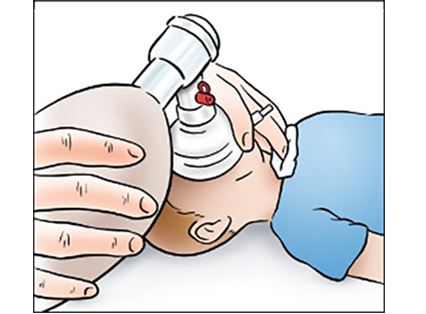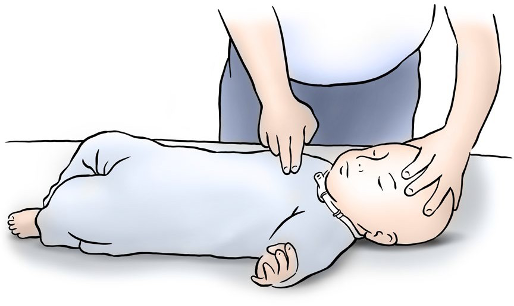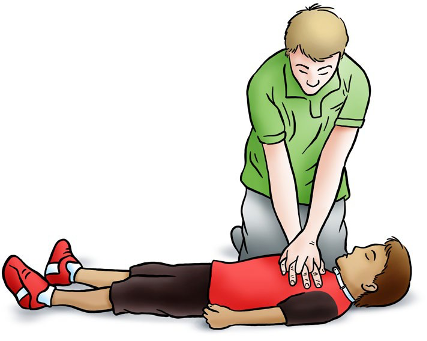Pediatric tracheostomy
Emergency care for a child with a tracheostomy tube
Download Emergency care for a child with a Tracheostomy Tube information sheet
This information describes emergency care for a child with a tracheostomy tube. It does not certify you in CPR. Please attend a CPR training course in your community.
How do I know my child is having problems breathing through the tracheostomy tube?
If your child’s tracheostomy tube becomes plugged with mucus and your child is having trouble breathing, you may notice:
- Appearance of distress or worry
- Your child placing their hands on the tracheostomy tube or trying to remove it
- A whistling sound from the tracheostomy tube with breaths
- Skin color turning pale, grey or blue
- Ineffective coughing (not able to clear tube of mucus)
- Chest not rising and falling with each breath
- Ventilator alarming
What do I do if my child cannot breathe through the tracheostomy tube?
Do not hesitate to change the tracheostomy tube!
Try suctioning the tracheostomy tube first if you are able to see secretions in the tube.
If the suction catheter sticks, or you cannot pass the suction catheter through the tracheostomy tube, remove the tracheostomy and quickly replace it with a new tracheostomy tube.
- Even if you are able to suction the tracheostomy tube and your child is not breathing, we recommend changing the tube.
- Your child may cough with the tracheostomy tube change.
Suction the new tracheostomy tube, if needed, to clear the secretions from the tube.
What do I do if my child’s color is still pale, blue or gray after the tracheostomy tube change?
In many cases changing the tracheostomy tube is all that is needed to help your child start to breathe.
If your child is not breathing you will need to start breathing for your child. Call 911.
How do I provide rescue breathing?

After you change the tracheostomy tube, check for breathing: Place your ear close to your child’s tracheostomy tube, listen and watch chest for movement/rise for 10 seconds.
If your child is not breathing, give 2 breaths using the self-inflating bag attached directly to the tracheostomy tube. If you do not have a self-inflating or “Ambu bag,” cover the tracheostomy and perform mouth to mouth.
Note: If you are not able to replace the tracheostomy tube you will need to cover the stoma, or hole where the tracheostomy tube was, and provide breaths using the face mask attached to the self-inflating bag or mouth to mouth. The mask should fit below the eyes and tightly cover the mouth and nose.
- Tilt the head back and lift on the chin pulling it up to help seal the mask to the face.
- If someone else is with you, ask them to cover the stoma while you give 2 breaths with the self-inflating bag.


Gently squeeze the bag and give 2 breaths – just enough to make the chest rise. Allow the bag to re-inflate between breaths
Check for breathing and a pulse for 10 seconds
If your child has a pulse, but not breathing effectively, continue providing 1 breath every 3 seconds with the ambu bag attached directly to the tracheostomy tube or the mask if you were not able to replace the tracheostomy tube. Call 911.
How do I find my child’s pulse?


If your child does NOT have a pulse, start CPR
-

CPR for children less than 1 year old
If you are alone, the compression to ventilation (breaths) ratio is 30:2, give 2 minutes of CPR before calling 911. If there are 2 rescuers, the compression to ventilation (breaths) ratio is 15:2 and 911 is called immediately by the 2nd person.
Give chest compressions at the rate of at least 100 per minute. Use two or three fingers in the center of the chest just below the nipples. Press down approximately one-third the depth of the chest (about 1 and a half inches).
Give 2 breaths using the self-inflating bag attached to the tracheostomy or mouth to mouth covering the tracheostomy. Each breath should take 1 second.
Note: If you were not able to replace the tracheostomy tube, cover the stoma, or hole where the tracheostomy tube was, and provide breaths using the face mask attached to the self-inflating bag or mouth to mouth.
-

CPR for children ages 1-8 years old
If you are alone, the compression to ventilation (breaths) ratio is 30:2. If you are alone with your child give 2 minutes of CPR before calling 911. If there are 2 people available, the compression to ventilation (breaths) ratio is 15:2 and 911 is called immediately by the 2nd person.
Use the heel of one or two hands for chest compressions. Press the sternum approximately one-third the depth of the chest (about 2 inches) at the rate of at least 100 per minute.
Give 2 breaths using the self- inflating bag attached to the tracheostomy or mouth to mouth covering the tracheostomy. Each breath should take 1 second.
Note: If you were not able to replace the tracheostomy tube, cover the stoma, or hole where the tracheostomy tube was, and provide breaths using the face mask attached to the self-inflating bag or mouth to mouth.
-

CPR for children older than 8 years old
This ratio (30:2) is the same for one-person & two-person CPR. In two-person CPR the person pumping the chest stops while the other gives breaths using the resus- citation bag attached to the tracheostomy.
Push down in the center of the chest 2 inches 30 times. Pump hard and fast at the rate of at least 100 per minute, faster than once per second. Give 2 breaths using the self-inflating bag attached to the tracheostomy or mouth to mouth covering the tracheostomy. Each breath should take 1 second.
Note: If you were not able to replace the tracheostomy tube you will need to cover the stoma, or hole where the tracheostomy tube was, and provide breaths using the face mask attached to the self-inflating bag or mouth to mouth.
Check for a pulse and breathing every 2 minutes or 5 sets or CPR. Continue CPR until help arrives.

